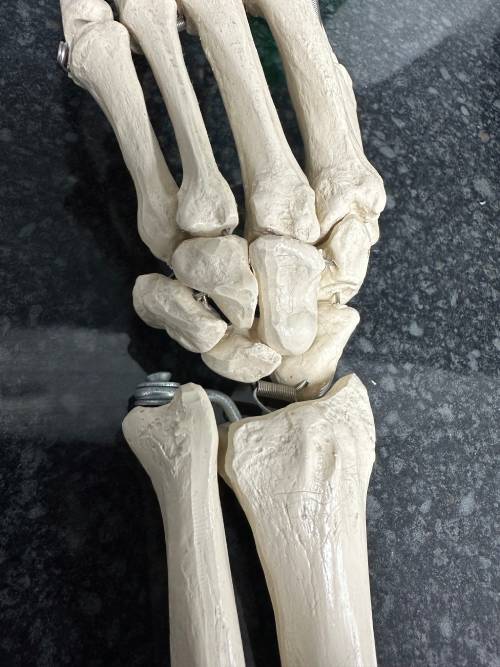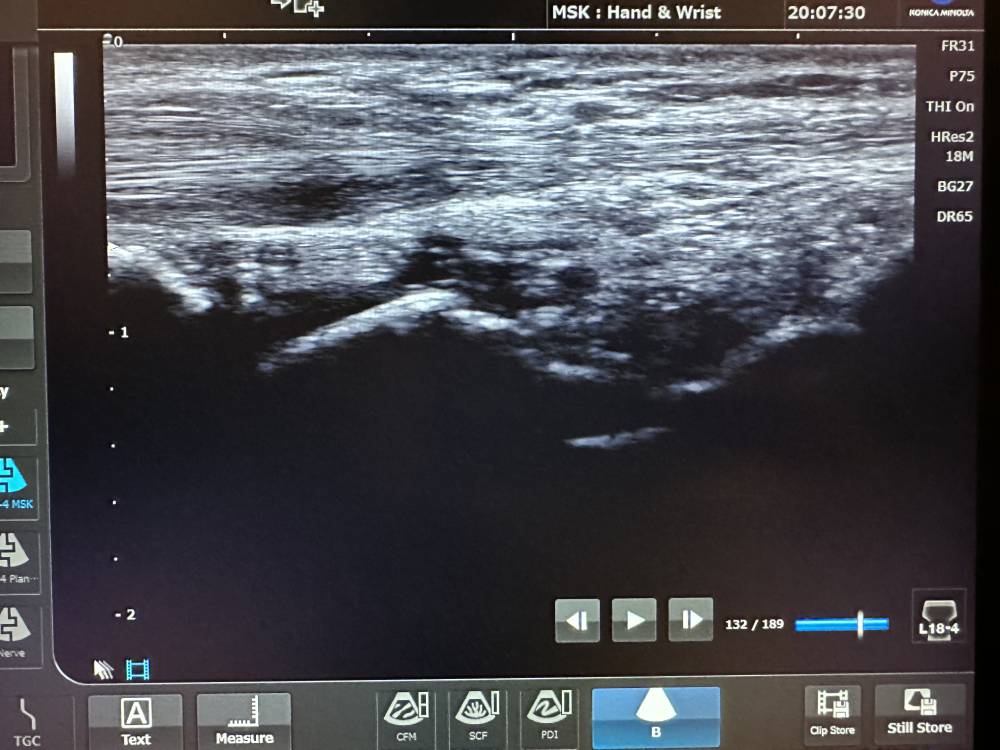
The medical terminology for the wrist is carpus, and it is the site at which the forearm meets the hand. A complex joint with several components, including bone, muscles, and ligaments, it allows a variety of movements, such as bending, straightening, twisting, or rotating.
A person can experience aches, pain, numbness or tingling at the wrist, which can have several causes. They can range from minor sprains to tendonitis, nerve entrapment, or even fractures.
Wrist pain – types and causes

The muscle tendons, nerves, and blood vessels of the hand originating in the forearm, are kept in place and given support by the wrist joint. As the hand is responsible for a wide range of movements, the wrist is very commonly susceptible to injury.
Many conditions are responsible for wrist pain, which in turn affects the motions of the hand. Depending on the site and reasons of pain, it is classified as:
Wrist pain while typing
- Carpal Tunnel Syndrome – present on the palm side, the carpal tunnel may end up compressing the median nerve that passes through it. This usually occurs due to medical conditions, an increase in weight or repetitive strain injury. When there are repetitive movements of the hand and wrist, such as typing, sewing, drawing, etc. The median nerve ends up getting inflamed, as well as the tendons passing through the Carpal tunnel, Patients usually experience numbness, tingling, weakness and wasting palm muscles. Symptoms can occur at night.
- De Quervain’s Tenosynovitis – a painful condition, also arising from overuse of the muscle tendons that move the thumb, namely abductor pollicis longus, and extensor pollicis brevis. This is a common occurrence with musicians, golfers, and people who have to use repetitive grasping and twisting motions, including new mothers lifting their babies up multiple times every day. As a result, the sheath around the tendons becomes inflamed causing pain and difficulty in grasping or making a fist.
- Tenosynovitis – it is a condition in which the synovium sheath, a protective covering around the tendons becomes inflamed. Usually triggered by inflammatory conditions such as Rheumatoid Arthritis or repetitive motion of the wrists. It causes tenderness, redness, and swelling in the joints of the hand and wrist, numbness and tingling across the back of the hand, and create difficulties in performing routine tasks. Stiffness, restricted and painful movement at the joints is also present.
- Cervical Nerve Root Entrapment – the nerves which control movement and sensation in the arm and hand arise in the neck (cervical spine), and may become compressed due to several factors. A herniated disc, degenerative spine disease, or spinal stenosis are common reasons for cervical nerve root entrapment. The pain travels along the path of the nerve affected, and the person may experience burning, tingling, or throbbing sensations. As the cervical nerves are responsible for motor and sensory control of the muscles of the arm, the power and function will often be affected
- Arthritis – due to the nature of the movement and activity involved when it comes to wrists, the joints undergo a lot of wear and tear. The joint cartilage becomes inflamed and arthritic, which decreases the production of synovial fluid that is essential for normal function. This results in constant friction and degeneration of the bones, leading to pain. The most common types of arthritis include osteoarthritis (usually age-related), and inflammatory arthritis
Investigations

After a detailed history and physical exam, your doctor may arrange further investigations such as:
- Xray – to identify or exclude bony abnormalities, fractures, or Arthritis
- MRI (usually cervical) –and often to check for signs of a disc herniation which may cause referred pain to the wrist
- Ultrasound – to detect tendon synovitis or ligaments injuries around the wrist. Ultrasound is also useful for assessing if there is early Arthritis in the wrist
- Nerve conduction studies: these are usually done when carpal tunnel syndrome is suspected
- Blood tests: often to rule out an inflammatory component to the wrist pain
Treatment Options
Usually, the best treatment plan is designed by your doctor according to the condition. This is done dependent on results and includes:
- RICE -Rice, Ice, Compression and Elevation.
- Analgesics – certain medicines like ibuprofen and naproxen are prescribed, to manage pain and inflammation
- Splinting – reduces the strain on flexor and external retinacula and improves pain and overall functioning of the wrist. Helps greatly in RSI related pain
- Cortisone Injections – Pain relief for severe and chronic wrist tendonitis, such as in carpal tunnel syndrome and extensor tenosynovitis, a cortisone medication is injected directly at the site of wrist pain.
- Nerve Hydro-dissection – a relatively new technique, nerve hydro-dissection involves injecting solution around the nerves to separate them from other structures at the site of their entrapment. Guided by ultrasound, it also dissects away any scar tissue that may be causing the pain and compression, and has a similar beneficial effect as surgery without the associated complications
- Surgery – often the last resort when all treatment options have failed, your doctor may advise surgery to alleviate the pain.
Conclusion
With the right treatment, wrist pain can be managed, if not completely treated. People are able to live normal functioning lives without being in chronic pain




